Install with the SDK Manager GUI
This section is intended to help you use the NVIDIA SDK Manager GUI to successfully configure your development environment.
Download SDK Manager
- SDK Manager works with two NVIDIA systems, NVOnline and DevZone. Navigate to the appropriate site for your user account, and log in.
- From the download page, locate
sdkmanager-[version].[build#].zip.- NVOnline users: turn on active filters by clicking the Show Groups Only button, then click the hyperlink for NVIDIA SDK Manager for DRIVE.
- DevZone users: after logging in, go to the NVIDIA DRIVE Downloads page.
- Download the file to your host machine.
Additional ZIP files containing Electron source code used in SDK Manager are available. You may download these if you wish.
- Extract the contents of the ZIP file.
- Double-click on the sdkmanager executable file, or open a terminal and launch it with the following command:
./sdkmanager
Log in and Run SDK Manager
- Select the appropriate login tab for your account type.
- NVOnline — partners.nvidia.com
- DevZone — developer.nvidia.com
- Enter the credentials for your account type, and click Login.
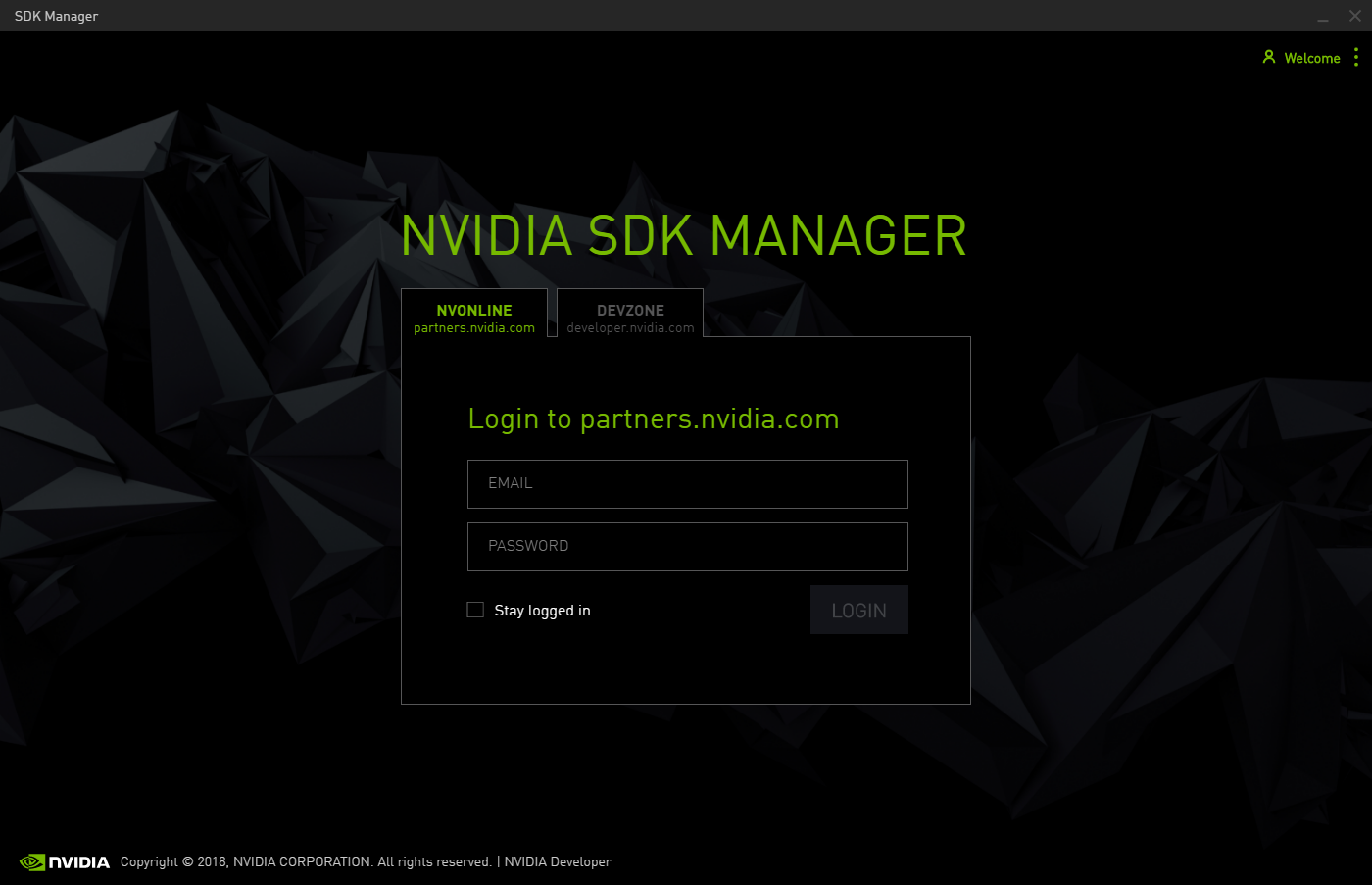
- Before proceeding, choose whether or not to enable data collection.
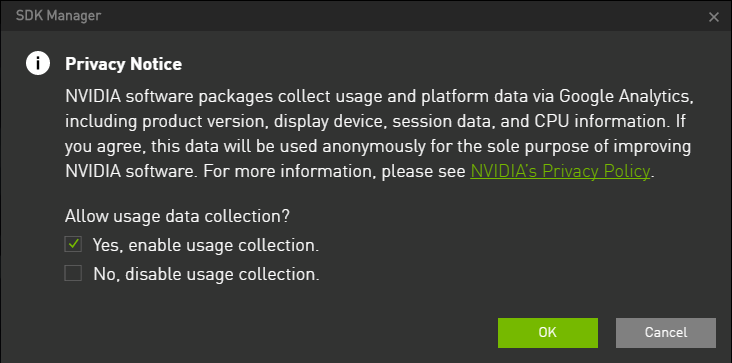
Step 1: Setup the Development Environment
- From Step 01 Development Environment, select the following:
- From the Product Category panel, select the DRIVE development environment.
- From the Hardware Configuration panel, select the host machine and target hardware.
- From the Target Operating System panel, select the desired operating system, such as QNX. Notice that the target operating systems available may change, depending on the options that were selected in the other panels.
An ellipsis (...) in the bottom right corner of a category box indicates that more than one option is available. Clicking on the ellipsis will show a drop-down menu of available options.
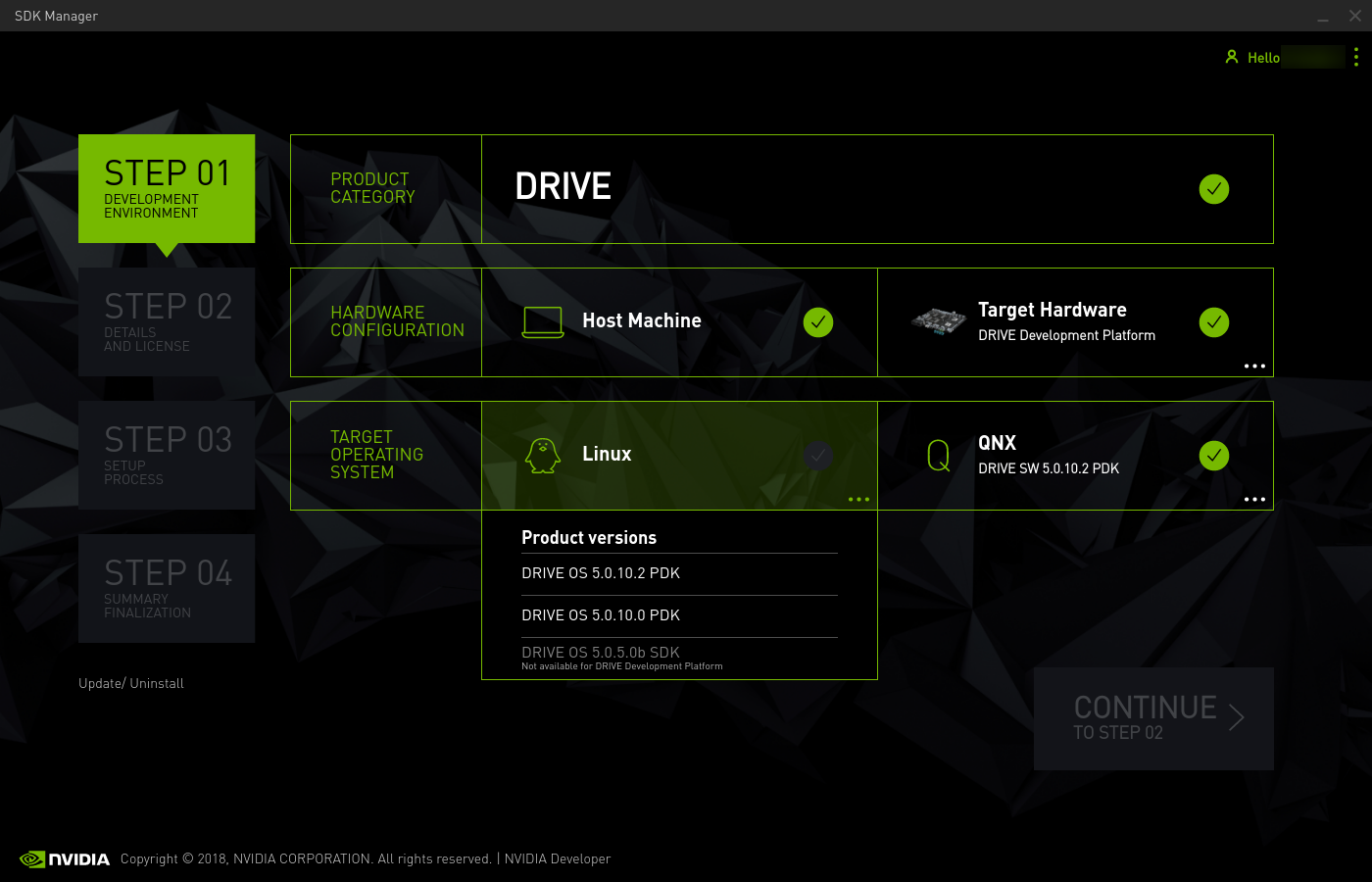
Note: Your display may differ from what's shown here. The information in this screen is populated by your NVIDIA user account access and permissions. If you don't see your product category in the available selections, you may need to verify that your NVIDIA account is registered to the required programs.
- Click Continue to proceed to the next steps.
Note: If you are setting up a QNX environment, you will see a pop-up where the path to the QNX toolchain should be entered before proceeding.
Step 2: Review Components and Accept Licenses
- From Step 02 Details and License, you can expand the host components and target components panels to review the components that will be installed on your system.
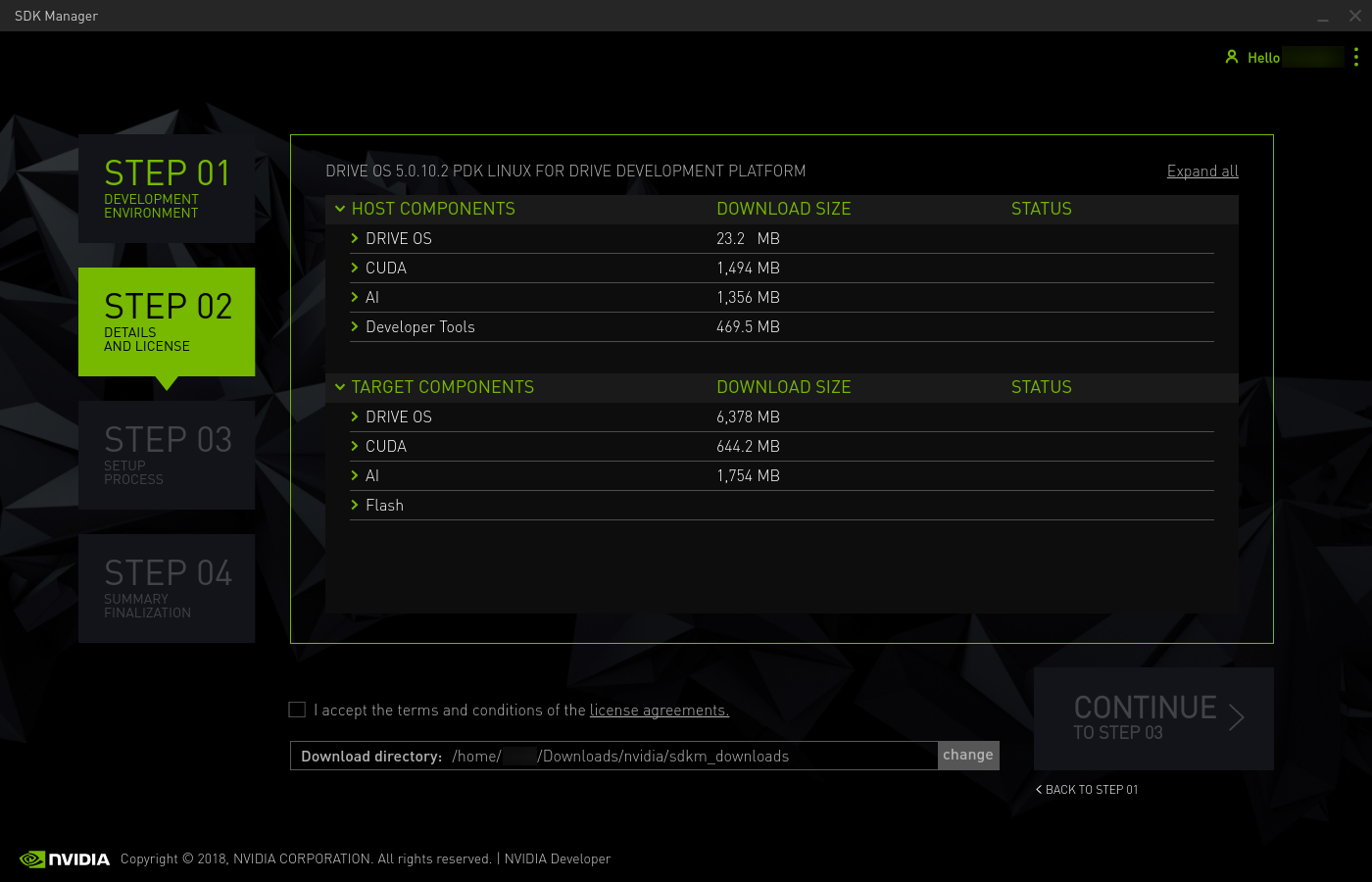
- To review the licenses, click on the license agreements hyperlink at the bottom of the page.

- Enable the checkbox to accept the terms and conditions of the license agreements.
- If you want SDK Manager to download all setup files to a location other than the default path, click change, and select the path you wish to use.
- Select Continue to proceed to the next steps.
Step 3: Installation
- Before the installation begins, you will be prompted to enter your sudo password.

- The display shows the progress of the download and installation of the software.

Select Pause / Resume to toggle the download and installation process.
- At the top, you can toggle between the Details and Terminal tabs. The Terminal tab will show the download and installation detailed information. Errors will be highlighted.
- On the Terminal tab, you can use the Search field to filter and search for specific information.
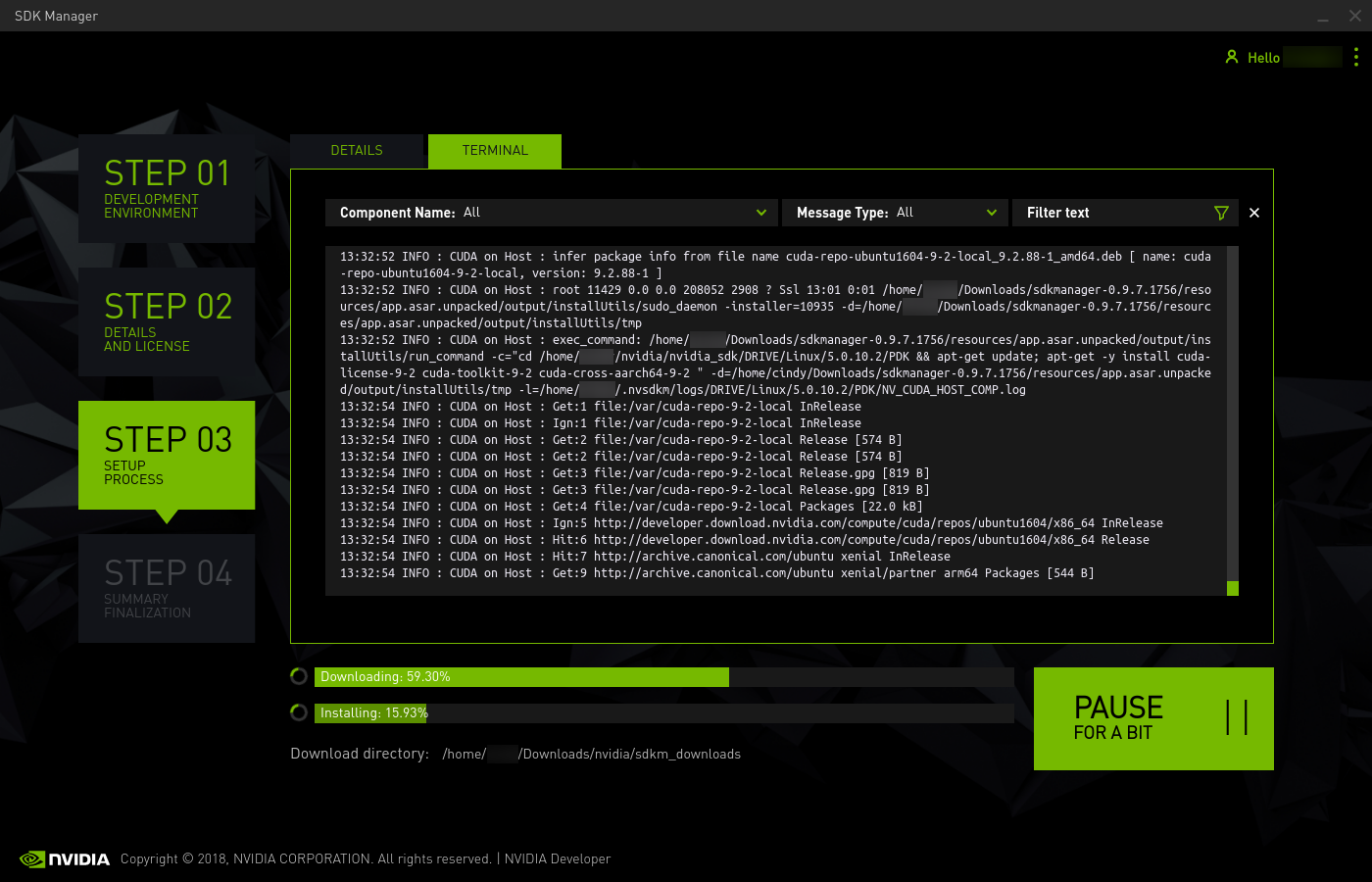
- Depending on your environment, you may receive multiple pop-ups asking you to re-enter the administrator/sudo password on the host machine, so certain packages can be installed.
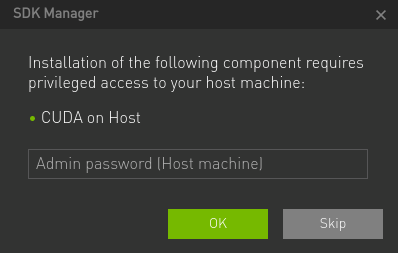
- A dialog will pop up when SDK Manager is ready to flash your target device. The prompt will provide instructions for preparing your device to get it ready for flashing.
Note: The instructions in the flashing dialog will vary based on your host and target environment settings.

Step 4: Finalize Setup
- From Step 04 Summary Finalization, you will see a summary of the components that were installed, along with any warnings or errors that were encountered.

- The Export Logs link will create a ZIP file of all log files that were created during installation. This ZIP file will be located in the same folder path where the SDK Manager installer downloaded all components.
Alternatively, you can choose Export Debug Logs from the drop-down menu in the top-right corner.

- Consult Error Messages for information on any errors you may encounter.
- Click Finish and Exit to complete the installation.
Repair and Uninstall
To update or uninstall an SDK on your system, launch SDK Manager again.
- Under the installation step numbers, click the Update / Uninstall hyperlink.
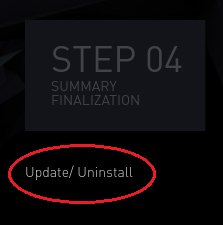
- The Manage NVIDIA SDKs screen will show you what's been installed on your system, and you can select whether to repair a broken installation, update an existing SDK, or uninstall an SDK.

NVIDIA Developer Documentation ©2018 NVIDIA Corporation. All Rights Reserved.